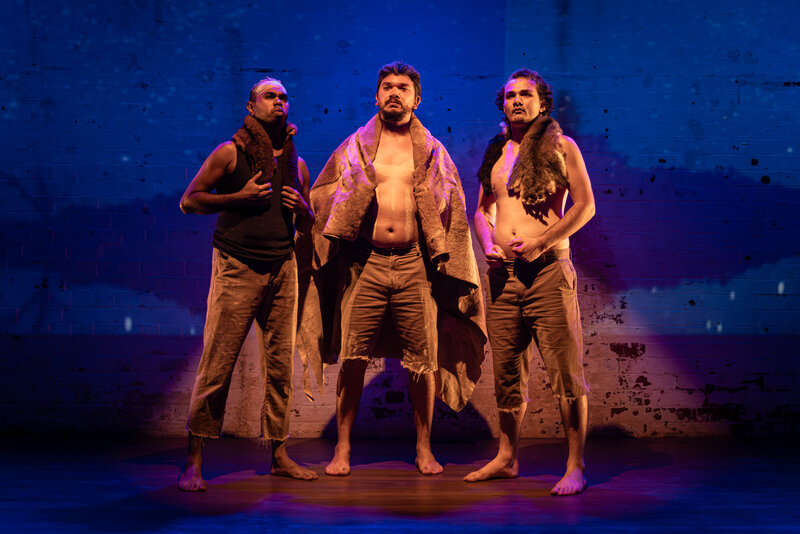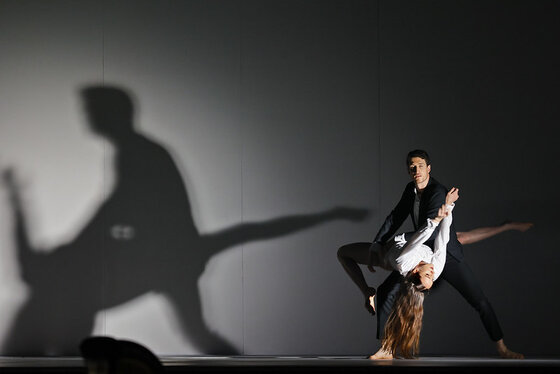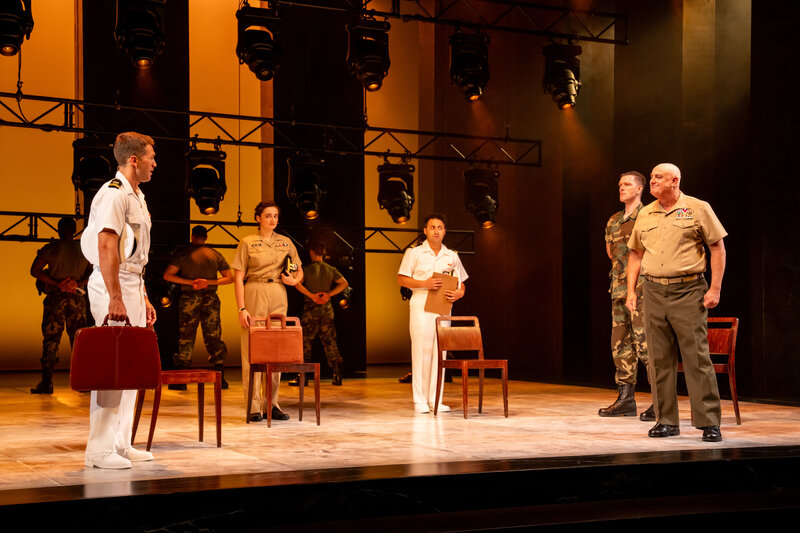“My short films were made as student films in a very unprofessional and renegade manner, but I think that grounding helped,” says Australian filmmaker Ariel Kleiman about his debut feature film Partisan, which hits local cinemas on May 28.

Partisan is a grim coming-of-age tale set against the backdrop of a sinister cult run by Gregori, a charismatic Fagin-like leader played by French actor Vincent Cassel, and young children who are indoctrinated into a world of violence as trained assassins. The central character is an eleven-year-old boy named Alexander, who slowly begins to think for himself and rebels against Gregori.
The origin of the film came when writer/director Kleiman and his partner Sarah Cyngler (a set decorator and costume designer) read an article about child assassins in Colombia, which described the horrible acts these kids were committing, simply because the adults around them were convincing them to do those kind of things. Kleiman recalls that although the story disturbed him it provided the spark for the film.
“There was even a level of sweetness to these kids,” Kleiman explains. “They were still kids – they were still innocent and they had a sense of pride over what they were doing because they were supporting their single mothers. It was all incredibly complex. I started imagining straight away who is this man who is convincing these kids to do this for him? And that’s how it all started.”
There is a lack of background detail about the film’s setting, and the character of Gregori, which somehow makes it all the more menacing. This was a deliberate choice by Kleiman, who wanted to tell the story strictly from the perspective of the young boy – Alexander – who is the hero of the film. Kleiman wanted to put the audience in his shoes, therefore he felt that audiences shouldn’t be privy to any any information that Alexander didn’t know. This also gives an innocence to his view of this grim world. “We see everything from his perspective, even some dark acts that he commits,” Kleiman elaborates. “They are portrayed in a kind of cold manner because he doesn’t understand the ramifications of what he is doing.
“There was never a specific reference point for the look of the film,” he continues. Kleiman and Cyngler looked a lot at a lot of photography, and they found inspiration in the photography of Vivian Maier, especially her street photography of kids. “There was a kind of incredible truthfulness in the way that she captured those children’s lives. That was something that I set out to do.”
 Partisan was shot in Melbourne, with the exteriors shot in the former Soviet republic of Georgia, which provided the distinctive setting for the film. “We knew early on that we wanted to set this movie in a nowhere land,” he explains. “We didn’t want to tell a literal story, and we didn’t feel like we were the right people to tell that story about Colombia, so we wanted to tell a story that was more inspired by myth or a fable.”
Partisan was shot in Melbourne, with the exteriors shot in the former Soviet republic of Georgia, which provided the distinctive setting for the film. “We knew early on that we wanted to set this movie in a nowhere land,” he explains. “We didn’t want to tell a literal story, and we didn’t feel like we were the right people to tell that story about Colombia, so we wanted to tell a story that was more inspired by myth or a fable.”
The pair had visited Georgia in 2010, and were struck by the landscape there. Georgia had just been involved in a war with Russia, and the country had this fading, crumbling grandeur that immediately felt like the nowhere land that Kleiman had envisaged. It was a total hodgepodge of architecture, all sorts of architectural styles, backdropped by huge mythic mountains. “That was part of creating that nowhere land. I was looking for certain landscapes that could build that world for us,” Kleiman adds. “From the very start it was always the idea that we would shoot the exterior scenes in Georgia. And luckily with the help of the producers we made it happen.”
The film was shot by cinematographer Germaine McMicking (Hail, TV series Gallipoli), who has worked extensively in the documentary field. And it was this background that drew Kleiman to him. “He had this amazing way of making images look incredibly natural but incredibly beautiful,” recalls Kleiman. “And I also loved the idea that Germaine had a strong history in documentary, because many times during the filming of Partisan we felt that we capturing a kind of documentary about these kids.”
McMicking actually travelled to Georgia by himself in pre-production just to get a sense of the life over there, adds Kleiman. “We were filming all this stuff in Australia and all this stuff in Georgia, and it had to kind of fit together seamlessly. So the kind of dedication he had for that trip brought a lot to the movie too.” McMicking broke his ankle in an accident on the set during the last week of shooting in Georgia.
Integral to the power of the drama was the casting of newcomer Jeremy Chabriel in the pivotal role of Alexander. As Alexander is in every scene, and has to go head to head with Vincent Cassel, it was a really daunting role to cast. Kleiman found Jeremy through a French school in Sydney late in an exhaustive casting process that involved a long search across Australia. “The first thing I was drawn to are his eyes,” remembers Kleiman. “He just has the most incredible eyes and such a striking presence. But he also had this great maturity and great sensitivity for a boy his age. I mean, at that age I was running around with dirt on my face and causing mischief,” he adds with a laugh. “But Jeremy just held himself with this great strength and stillness, and to be honest, from very early on I felt like this was going to be the kid.
 “I think he does (have a big future) because he has such a level head, he’s got great parents, and he’s just such a natural performer. He’s never had an acting lesson or even acted before in his life before he made this movie. He’s an incredibly natural performer and a very quick learner. He picked up a lot of Vincent’s tricks, and observed Vincent a lot in the way he works. And he really evolved as an actor throughout the shoot. He was amazing to watch.”
“I think he does (have a big future) because he has such a level head, he’s got great parents, and he’s just such a natural performer. He’s never had an acting lesson or even acted before in his life before he made this movie. He’s an incredibly natural performer and a very quick learner. He picked up a lot of Vincent’s tricks, and observed Vincent a lot in the way he works. And he really evolved as an actor throughout the shoot. He was amazing to watch.”
Kleiman admits that he thought of Cassel for the role of Gregori early on in the process. “Vincent can effortlessly portray menace and charm at the same time like no-one else. But I also thought he had a more vulnerable side as a performer, and I was interested in seeing that come out in Gregori too.” When he first conceived of the character he envisaged him as a kind of Pied Piper figure. In developing the character they also talked about people they knew or celebrities who were like kids trapped in old bodies. They looked a lot at aging skateboarders who had lived this physical lifestyle; they often have broken knees and walk with a limp, and they look haggard. But they still look like kids, and they have got a childish glint in their eyes.
Kleiman hails from a background in short films, with a handful of shorts to his credit. His previous film was the award winning 20-minute short Deeper Than Yesterday, shot in 2010. Kleiman rationalised that if he could tell a story in 20 minutes then he could tell one in 90 minutes. “It was very different to be honest,” he confesses. “My short films were made as student films in a very unprofessional and renegade manner, but it’s still storytelling, and I think the grounding I had in short film helped.”
He workshopped Partisan at the Sundance Institute for five weeks, and admits that experience gave him a lot of confidence about shooting his first feature film. Partisan premiered at the Sundance Film Festival earlier this year to a positive response. “It’s very cold outside but the audiences are so warm,” he enthuses. “They’re incredibly excited about seeing new cinema and fresh cinema, and the audience response was overwhelming really. It was amazing to see audiences at Sundance connect with Jeremy and connect with the role. I was worried that Vincent would overshadow Jeremy’s performance, but in fact at our first Q&A all of the questions were for Jeremy. That was pretty amazing to see.”
Greg King

David Edwards is the former editor of The Blurb and a contributor on film and television




